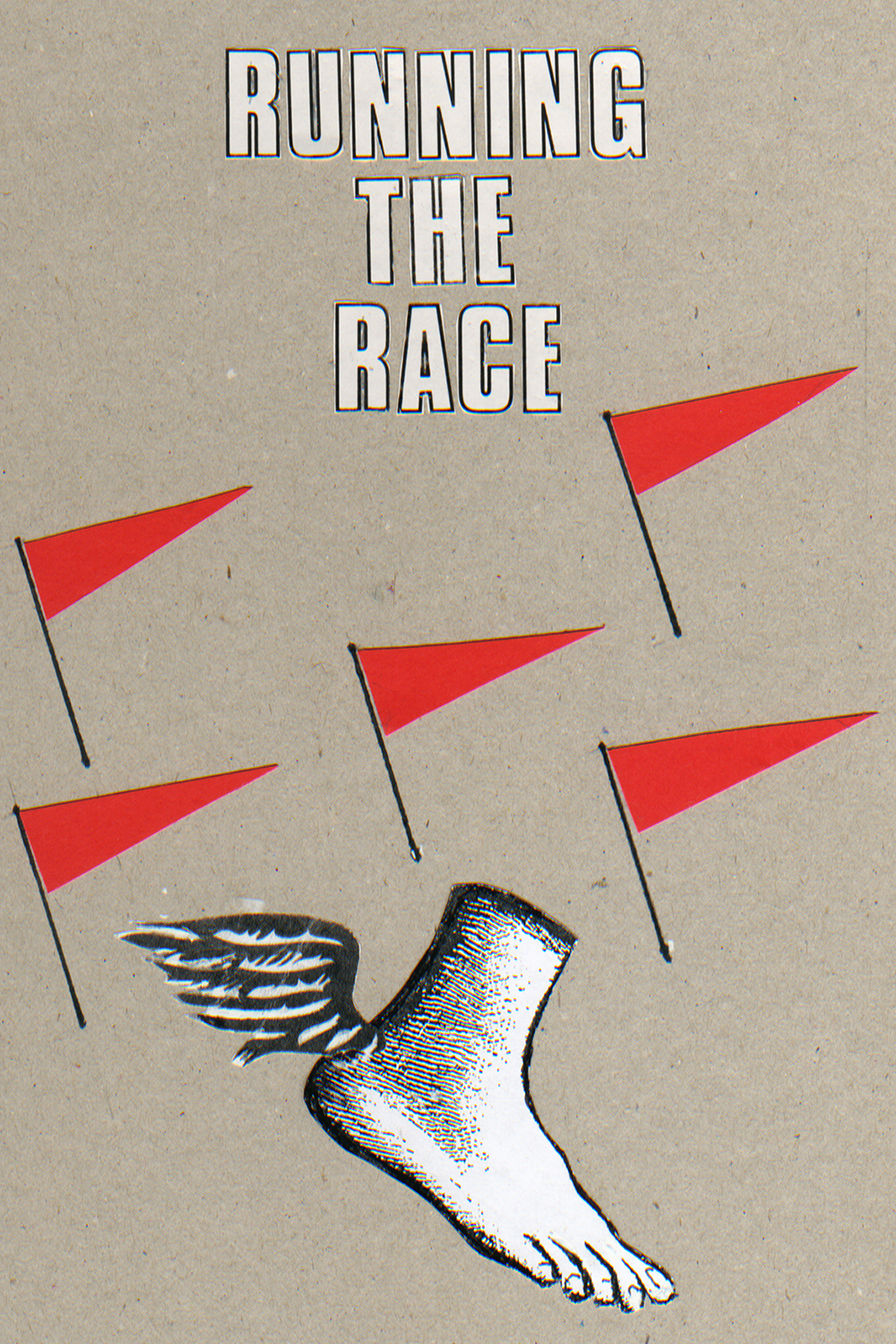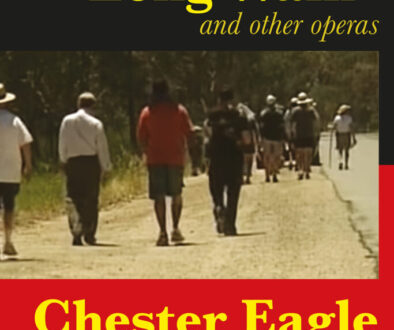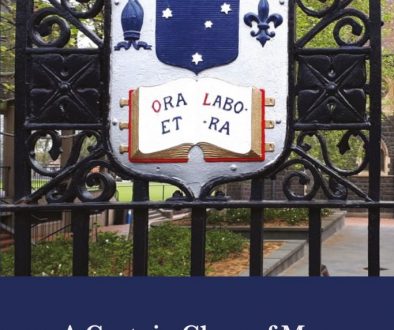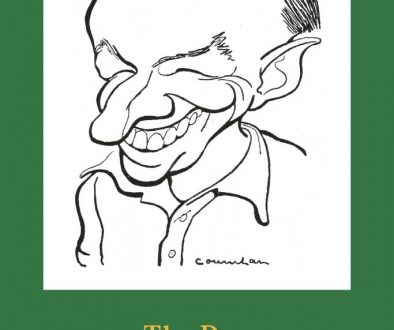Running The Race

Written by Chester Eagle
Cover by Vane Lindesay
Layout by Karen Wilson
Circa 167,000 words
Electronic publication by Trojan Press (2010)
The writing of this book:
After an appraisal of my own abilities (meaning inexperience, I think) I made what I’m sure was the right decision – to talk about the place, and not myself. In recent years I have revisited that period and used experiences excluded from my first book in later work, particularly some of the mini-mags available on this site. Running The Race takes this process further, since much of it is in set in Gippsland and incorporates some real (and quite a few imagined) experiences from that period of my life. There is a character, Carl Nelson, who roughly approximates my younger self, and there are numerous reflections on small town life which develop feelings strong in me in those years.
Yet this is not the whole of it. I’ve subtitled the book ‘a novel of sorts’, and if I ask myself what I mean by those words, I think I would have to say that Running The Race is a novel about the capacities and limits of what it means to write a novel: it’s a book about the writing of a certain type of book.
If you are in any way like me, dear reader, you are probably making up your mind to proceed with great caution.
I join you. To be honest, I hardly know what to make of Running The Race. A novel of sorts? Yes, but what does that tell us? Let us investigate and see what we can find.
In one sense this novel (written 2009 – 2010) was conceived late in my Gippsland years: circa 1965, I developed the idea of a story about the students of a school setting off on a run, with the promise of something at the canteen when they got back. But nobody knew the nature of the run they were starting; it was no more nor less than their whole lives they were beginning, and neither teachers nor mothers would be there by the time they – or a few of them – got back. Life would have run its course, swallowing them up in doing so.
This meant, if you think about it for a moment, that the run was a metaphor for a life lived, and at once we are/I was in the territory of Wainwrights’ Mountain, my most ambitious book by far. Wainwrights’ Mountain is built on a metaphor. In a sense, it is nothing but one vastly elaborated metaphor. There is a place, the top of the mountain, where Giles Wainwright glories in being able to see the whole world. The mountain represents the idea of a unified vision of life. Was Running The Race to be some sort of variation on the same, or similar, theme?
Yes, no, maybe: where do I stand on this?
I started out thinking it would be, but right at the beginning I could see that by describing the actual start of an actual run I was contradicting, perhaps undermining, my metaphorical intentions. I knew, at the end of the very first section, that there would be later sections in which the existence, the happening, of the run would be questioned. I was in the position of both affirming something and querying it. This is by no means an impossible position for a writer but it left the metaphorical status of my story in doubt.
This problem was compounded by the fact that it quickly became clear that this ‘novel of a sort’ wasn’t going to have a central set of characters to focus on. A hundred or so young people set off on the run, any number of townsfolk are curious about them, later people will be affected also, if only by hearing about what was supposed to have happened, and the run itself is an indicator of a way to think about life rather than an episode to be examined for itself. The subject matter, then, is life itself, a way of looking at it has been indicated, and after that …
Who knows?
There was nothing to do but keep going and see how the book itself solved the problem of its existence.
So what did the book do?
It chose to follow the lives of quite a few people, most of them connected with the run in some way. People take up a variety of positions in relation to the run. Carl Nelson isn’t very interested in it, yet he is mentioned by Joanna McGregor, his lover for a time, to two boys she happens to pick up in her car when they flag her down for a ride back to a place near the school where they can hide till the other runners get back. Joanna’s view of the run isn’t revealed, but I think we can take it that she would see it as foolish activity without any purpose. (Joanna sees most things in this way.)
I say the book ‘chose to follow the lives of quite a few people’, which gets us somewhere near the reason why I’ve called the book ‘a novel of sorts’; most novels select an inner core of people to be the focus of such comment as the book may make. Most books (plays, poems, operas, other forms of art) show life in a particular way, be it tragedy, comedy, comedy of manners, or what you will. This is done because to choose a particular form of focus gives the work’s creator the opportunity to show the people who are his/her chosen subject with the extra intensity of the form, whatever it may be. With this novel, it is the variety of life’s paths that is my subject. The young people who go on the run, and those who are teaching them at the time, are shown as being similar – they are, that is, encorralled by the nature of the run – while their later, their ultimate pathways and purposes are going to turn out very differently, one from another. Some of them – Wendy and Erica come to mind – are squeezed together at the time of their early experience, but go on, with their schooldays behind them, to lead quite dissimilar lives. The same holds true for Neil and Sam. Neil is an interesting case. He is a farmer, one of four children. He marries and he becomes the father of four children. He is a most successful farmer and his properties will go on to his children – then he is stricken by his passion for a much younger woman.
By way of contrast, Sam is an estate agent who is a somewhat calculating womaniser; and yet he finds a love that can be shared and revelled in. The story of the love he finds with Muriel is quite the opposite of what he expects from an involvement with a policewoman. The fact that it is her job to enforce the law is much less important than the fact that she is capable of a broad and beautiful love for a man she trusts. She makes Sam rise to meet her demands though he never expected any such thing to happen!
So the novel is about life’s varied forms and pathways rather than an intensive examination of one specific form of behaviour, or outcome, in the great abstraction we call life. This doesn’t prevent Running The Race being a novel but I’ve called it a novel ‘of sorts’ because it takes its form, its behaviour, as a novel in a fashion remarkably like the treatment I gave to the people described in my first published book, Hail & Farewell: an Evocation of Gippsland (1971), though that was a non-fiction work. This way of looking at life crops up elsewhere in my writing. I notice, for instance, that the story (mini-mag) The Saints in Glory, also available on this website, does much the same thing with a group of characters who are linked and apparently alike at the beginning but have widely differing lives ahead of them, as the story goes on to show.
One last point, about revising the book once it was finished. I did my usual quick revision, looking for lazy words to snip from my sentences, and noticed that I was being harder than usual on my first version. I was less interested in the musicality of my prose and more harshly concerned with cutting anything I saw as waste. Then I discovered, when I’d finished that process, that I still wasn’t happy. I had a feeling that I may well have lost my readers somewhere along the way, as I changed focus from one character to another. What to do? I decided to put in section headings. I read through the book again, looking for breaks in the attention demanded by the text. I put in nineteen headings, and then I went through the book again, inserting sub-headings that might also be useful as guidance. At the same time I maintained the many lesser breaks between sections that were already there. It seemed to me that these section names I’d inserted might guide readers rather than leave them to find a pathway through the book without help. I wouldn’t say that I necessarily made the book any clearer to read but I think what I did does allow the reader to feel the presence of a guiding intellect: this, I hope, gives some sense of reassurance should readers become mystified at any stage.



